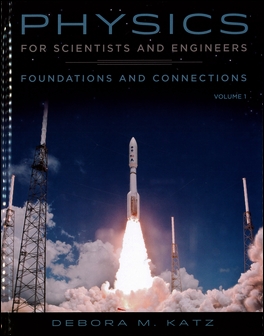書籍分類

Physics for Scientists and Engineers: Foundations and Connections, Volume 1 1/e
作者:Debora M. Katz
原價:NT$ 750
ISBN:9789865632717
版次:1
年份:2017
出版商:Cengage Learning
頁數/規格:752頁/平裝彩色
版次:1
年份:2017
出版商:Cengage Learning
頁數/規格:752頁/平裝彩色
內容介紹 本書特色 目錄 作者介紹
- Description
Cengage Learning is pleased to announce the publication of Debora Katz’s ground-breaking calculus-based physics program, PHYSICS FOR SCIENTISTS AND ENGINEERS: FOUNDATIONS AND CONNECTIONS. The author’s one-of-a-kind case study approach enables students to connect mathematical formalism and physics concepts in a modern, interactive way. By leveraging physics education research (PER) best practices and her extensive classroom experience, Debora Katz addresses the areas students struggle with the most: linking physics to the real world, overcoming common preconceptions, and connecting the concept being taught with the mathematical steps to follow.
How Dr. Katz deals with these challenges—with case studies, student dialogues, and detailed two-column examples—distinguishes this text from any other on the market and will assist you in taking your students “beyond the quantitative.”
分類位置:
理工 > 物理 > 物理學


